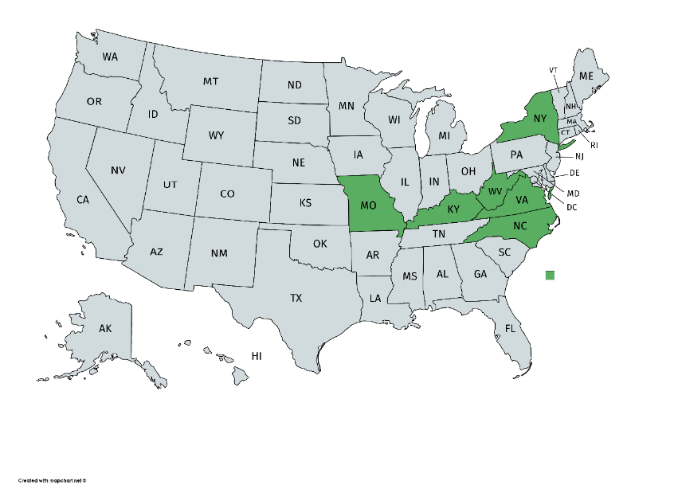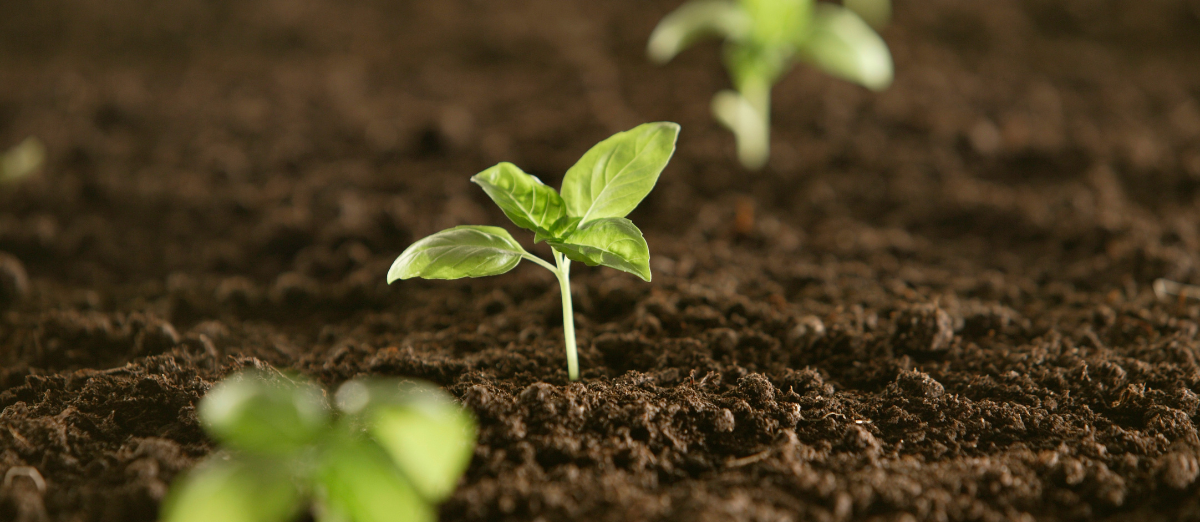Bale Grazing Grant Comes to Kentucky and Beyond
Author(s): Greg Halich
Published: March 30th, 2023
Shareable PDF
“Bale Grazing: A Practical, Low-Cost, and Environmentally-Sound Management Strategy to Winter Beef Cattle”, is a NRCS Conservation Innovation Grant that has been funded for six states – Kentucky, North Carolina, West Virginia, Missouri, Virginia, and New York (see figure 1). The grant started in 2022 and will end February 2028. 
Bale grazing is a winter-feeding method where bales are set out on pasture and fed in a planned, controlled manner, somewhat like rotational grazing. Temporary electric fencing limits cattle access to those bales that you want fed in the current move. With each move a fence is set up to expose new bales, usually 30-90 feet in front of the previous fence, which is then taken down to allow the cattle access to the new bales. Where hay rings are used, they are rolled from the old bales to the new bales and flipped over into place. The process is typically repeated every 1-7 days. Properly planned, you will not need to use a tractor for months at a time, nutrients will be deposited where they are needed, and cattle will stay clean of mud. Simple, cheap, and effective. The main requirements to making it work are cattle trained to electric fencing, advanced planning, and an open mind.
NRCS is interested in bale grazing because their previous focus for solving the winter feeding problem with beef cattle has been with engineered feeding structures. Bale grazing is a management-based solution but very little previous research has been conducted on bale grazing, and almost none in the eastern US. Bale grazing has historically been used most frequently in the Great Plains area in the US and Canada. The eastern US gets considerably more rainfall during the winter and bale grazing had to be modified to make it work well here.
This project will provide the much-needed research NRCS desires for the eastern US, and this was likely the main reason the project was funded for $2.3 million. Thus one of the focuses of the project is to collect data that will provide NRCS with the answers to the many questions they have about bale grazing as well as winter feeding in general. NRCS will use the research that comes out of this project to guide policy decisions.
Soil chemistry, forage productivity, and bale grazing’s effect on overall profitability will be evaluated as part of the project. One of the unique attributes of this project is a focus of measuring soil biological activity as part of the soil testing. Soil biological activity is an area that has rapidly developed in the last 4-5 years, and we are learning that improvements in soil biological activity can make available chemical-based fertility that was previously in unavailable forms. It is believed by many proponents of bale grazing that soil biological activity is radiated outward from where bales are fed, and thus when scattered out on pasture can lead to rapid increases in soil biological activity, especially where it has previously been depleted. Another unique attribute of this project is the on-farm focus: All of the research will be conducted on actual farms, in real-world settings.
The other major focus of the project is to provide demonstration farms where cattle farmers in the various regions in each state have a farm where they can see bale grazing in action. I have found that seeing is believing when it comes to most farmers implementing new practices. Presentations to farmer groups is helpful, but will never have the same impact as experiencing a new concept like bale grazing on a real farm. As an example, a few years ago I worked with then ANR agent Tommy Yankey in Anderson County with two bale-grazing demonstration farms (funded by a small SARE grant). A third cattle farmer in Anderson County was highly skeptical of the bale grazing concept and told one of those two farmers he was making a major mistake by adopting it. After a year of observing bale grazing on that farm, the third farmer began bale grazing himself, and is now one of the farms that is bale grazing as part of the current NRCS grant. That is the power of on-farm demonstrations.
This project is already having impacts. NRCS has a half-day session after the main American Forage and Grassland Council annual meeting, and in January 2023 had me present on bale grazing and the bale grazing project. Based on that presentation, an NRCS administrator realized their bale grazing requirements for EQIP funding (currently available only in a few states) require farmers to feed at hay densities that are far too concentrated for conditions in the east. Results and recommendations that come from this grant will continue to advise NRCS on bale grazing protocols.
The overall project is being led by me (Greg Halich) and managed by Samantha Kindred, both in the Department of Agricultural Economics. Jeff Lehmkuhler (Animal Science) and Ray Smith (Plant and Soil Science) are CO-principal Investigators for the project.
We are currently finishing with our first winter bale grazing for the project, but are looking for cattle farms that would like to participate in this project in the next four years. If you are potentially interested, or if you just have questions related to bale grazing, you can contact your county extension agent or you can contact me directly.

Josh and Melissa Ballard Farm, Shelby County, January 2023.

Mike Wilson Farm, Anderson County, January 2023
Recommended Citation Format:
Halich, G. "Bale Grazing Grant Comes to Kentucky and Beyond." Economic and Policy Update (23):3, Department of Agricultural Economics, University of Kentucky, March 30, 2023.
Author(s) Contact Information:
Greg Halich | Associate Extension Professor | greg.halich@uky.edu
Recent Extension Articles
Maximizing Value: 2023 Spring Application of Broiler Litter for Grain Crop Production
Jordan Shockley | March 30th, 2023
Spring is here and grain producers across the state are gearing up for planting. One of the many decisions producers have to make before planting is in regard to their nutrient management plan. Broiler litter provides a great opportunity as a complete fertilizer and is being produced and used throughout the state in grain production. However, the value of broiler litter can vary greatly depending on the management practices, nutrient content of the litter, soil test data and commercial fertilizer prices.
Stocker Outlook for 2023
Greg Halich and Kenny Burdine | March 30th, 2023
Spring has officially arrived in the Commonwealth, which always brings questions about stocker profitability. Calf prices typically increase seasonally as we move into spring, but have increased at a larger-than-normal rate since the end of 2022. While it is likely that some stocker operators purchased calves early, to get ahead of the seasonal spring price increase, most will place calves into stocker programs in the coming weeks.




